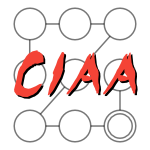Stem walkthrough$ (all stems)
25 papers:
 ICSE-v2-2015-SalvaneschiMT #programming
ICSE-v2-2015-SalvaneschiMT #programming- Reactive Programming: A Walkthrough (GS, AM, GT), pp. 953–954.
 CHI-2013-GrigoreanuM #agile
CHI-2013-GrigoreanuM #agile- Informal cognitive walkthroughs (ICW): paring down and pairing up for an agile world (VG, MM), pp. 3093–3096.
 HIMI-HSM-2013-OConnorRZKLDJBVS #empirical
HIMI-HSM-2013-OConnorRZKLDJBVS #empirical- Pre-study Walkthrough with a Commercial Pilot for a Preliminary Single Pilot Operations Experiment (RO, ZR, JZ, RWK, JL, AQVD, WWJ, VB, KPLV, TZS), pp. 136–142.
 ICEIS-v3-2013-Plechawska-WojcikLW #assessment #case study #experience #user interface #using #web
ICEIS-v3-2013-Plechawska-WojcikLW #assessment #case study #experience #user interface #using #web- Assessment of User Experience with Responsive Web Applications using Expert Method and Cognitive Walkthrough — A Case Study (MPW, SLM, LW), pp. 111–118.
 CHI-2006-PrabakerBC #authoring #documentation #evaluation #programming #using
CHI-2006-PrabakerBC #authoring #documentation #evaluation #programming #using- An evaluation of using programming by demonstration and guided walkthrough techniques for authoring and utilizing documentation (MP, LDB, VC), pp. 241–250.
 SAC-2006-RodriguesBM #3d #interactive #mobile #visualisation
SAC-2006-RodriguesBM #3d #interactive #mobile #visualisation- Interactive Mobile 3D Graphics for on-the-go visualization and walkthroughs (MAFR, RGB, NCM), pp. 1002–1007.
 RE-2004-ZachosM #multi #named
RE-2004-ZachosM #multi #named- ART-SCENE: Enhancing Scenario Walkthroughs With Multi-Media Scenarios (KZ, NAMM), pp. 360–361.
 CHI-2003-BlackmonKP #problem #usability #web
CHI-2003-BlackmonKP #problem #usability #web- Repairing usability problems identified by the cognitive walkthrough for the web (MHB, MK, PGP), pp. 497–504.
 CHI-2002-BlackmonPKL #web
CHI-2002-BlackmonPKL #web- Cognitive walkthrough for the web (MHB, PGP, MK, CHL), pp. 463–470.
 CHI-2002-PinelleG #evaluation #usability
CHI-2002-PinelleG #evaluation #usability- Groupware walkthrough: adding context to groupware usability evaluation (DP, CG), pp. 455–462.
 ICPR-v3-2002-TomiteYY #image #interactive #multi
ICPR-v3-2002-TomiteYY #image #interactive #multi- Arbitrary Viewpoint Rendering from Multiple Omnidirectional Images for Interactive Walkthroughs (KT, KY, NY), pp. 987–990.
 ICSE-2002-CiolkowskiLRSP
ICSE-2002-CiolkowskiLRSP- Software inspections, reviews & walkthroughs (MC, OL, HDR, FS, DEP), pp. 641–642.
 CHI-2000-Spencer #constraints #development #social
CHI-2000-Spencer #constraints #development #social- The streamlined cognitive walkthrough method, working around social constraints encountered in a software development company (RS), pp. 353–359.
 ICPR-v1-2000-LaoWLO
ICPR-v1-2000-LaoWLO- Creating Virtual Walkthrough Environment from Vertical Panoramic Mosaic (TkL, KhW, KsL, SHO), pp. 1575–1578.
 ICPR-v3-2000-ChoKN #image #interface #performance #using
ICPR-v3-2000-ChoKN #image #interface #performance #using- An Efficient Walkthrough from Two Images Using View Morphing and Spidery Mesh Interface (HSC, CHK, SN), pp. 3143–3146.
 HCI-EI-1999-HertzumJ
HCI-EI-1999-HertzumJ- The Evaluator Effect during First-Time Use of the Cognitive Walkthrough Technique (MH, NEJ), pp. 1063–1067.
 HCI-EI-1999-SuzukiKO #design #named #process
HCI-EI-1999-SuzukiKO #design #named #process- QUIS: applying a new walkthrough method to a product design process (SS, AK, KO), pp. 933–937.
 WIA-1998-Silberztein
WIA-1998-Silberztein- INTEX 4.1 for Windows: A Walkthrough (MS), pp. 230–243.
 CHI-1995-JohnP #approach #case study #learning #using
CHI-1995-JohnP #approach #case study #learning #using- Learning and Using the Cognitive Walkthrough Method: A Case Study Approach (BEJ, HP), pp. 429–436.
 HCI-SHI-1993-FaradayS #design #multi #towards
HCI-SHI-1993-FaradayS #design #multi #towards- Toward a Walkthrough Method for Multimedia Design (PF, AGS), pp. 452–457.
 CHI-1992-KaratCF #comparison #empirical #evaluation #testing #user interface
CHI-1992-KaratCF #comparison #empirical #evaluation #testing #user interface- Comparison of empirical testing and walkthrough methods in user interface evaluation (CMK, RC, TF), pp. 397–404.
 CHI-1992-WhartonBJF #case study #experience #recommendation #user interface
CHI-1992-WhartonBJF #case study #experience #recommendation #user interface- Applying cognitive walkthroughs to more complex user interfaces: experiences, issues, and recommendations (CW, JB, RJ, MF), pp. 381–388.
 CHI-1991-BellRL #programming #testing #usability #visual notation
CHI-1991-BellRL #programming #testing #usability #visual notation- Usability testing of a graphical programming system: things we missed in a programming walkthrough (BB, JR, CHL), pp. 7–12.
 CHI-1991-RiemanDHEPL #automation
CHI-1991-RiemanDHEPL #automation- An automated cognitive walkthrough (JR, SD, DCH, ME, PGP, CHL), pp. 427–428.
 CHI-1990-LewisPWR #design #interface #testing
CHI-1990-LewisPWR #design #interface #testing- Testing a walkthrough methodology for theory-based design of walk-up-and-use interfaces (CHL, PGP, CW, JR), pp. 235–242.
 ICSE-v2-2015-SalvaneschiMT #programming
ICSE-v2-2015-SalvaneschiMT #programming CHI-2013-GrigoreanuM #agile
CHI-2013-GrigoreanuM #agile HIMI-HSM-2013-OConnorRZKLDJBVS #empirical
HIMI-HSM-2013-OConnorRZKLDJBVS #empirical ICEIS-v3-2013-Plechawska-WojcikLW #assessment #case study #experience #user interface #using #web
ICEIS-v3-2013-Plechawska-WojcikLW #assessment #case study #experience #user interface #using #web CHI-2006-PrabakerBC #authoring #documentation #evaluation #programming #using
CHI-2006-PrabakerBC #authoring #documentation #evaluation #programming #using SAC-2006-RodriguesBM #3d #interactive #mobile #visualisation
SAC-2006-RodriguesBM #3d #interactive #mobile #visualisation RE-2004-ZachosM #multi #named
RE-2004-ZachosM #multi #named CHI-2003-BlackmonKP #problem #usability #web
CHI-2003-BlackmonKP #problem #usability #web CHI-2002-BlackmonPKL #web
CHI-2002-BlackmonPKL #web CHI-2002-PinelleG #evaluation #usability
CHI-2002-PinelleG #evaluation #usability ICPR-v3-2002-TomiteYY #image #interactive #multi
ICPR-v3-2002-TomiteYY #image #interactive #multi ICSE-2002-CiolkowskiLRSP
ICSE-2002-CiolkowskiLRSP CHI-2000-Spencer #constraints #development #social
CHI-2000-Spencer #constraints #development #social ICPR-v1-2000-LaoWLO
ICPR-v1-2000-LaoWLO ICPR-v3-2000-ChoKN #image #interface #performance #using
ICPR-v3-2000-ChoKN #image #interface #performance #using HCI-EI-1999-HertzumJ
HCI-EI-1999-HertzumJ HCI-EI-1999-SuzukiKO #design #named #process
HCI-EI-1999-SuzukiKO #design #named #process WIA-1998-Silberztein
WIA-1998-Silberztein CHI-1995-JohnP #approach #case study #learning #using
CHI-1995-JohnP #approach #case study #learning #using HCI-SHI-1993-FaradayS #design #multi #towards
HCI-SHI-1993-FaradayS #design #multi #towards CHI-1992-KaratCF #comparison #empirical #evaluation #testing #user interface
CHI-1992-KaratCF #comparison #empirical #evaluation #testing #user interface CHI-1992-WhartonBJF #case study #experience #recommendation #user interface
CHI-1992-WhartonBJF #case study #experience #recommendation #user interface CHI-1991-BellRL #programming #testing #usability #visual notation
CHI-1991-BellRL #programming #testing #usability #visual notation CHI-1991-RiemanDHEPL #automation
CHI-1991-RiemanDHEPL #automation CHI-1990-LewisPWR #design #interface #testing
CHI-1990-LewisPWR #design #interface #testing









